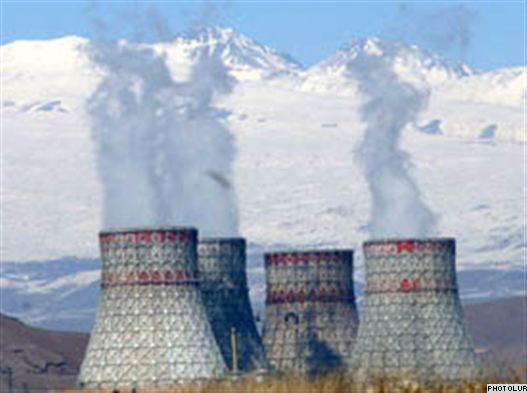Azerbaijan, Baku, May 14 / Trend, E.Tariverdiyeva /
As the political and radioactive fallout of Japan's Fukushima meltdown spreads, serious regional concerns over the safety of Armenia's aging Metsamor Nuclear Power Plant continue to mount, a professor at the Azerbaijan Diplomatic Academy (ADA) Richard Rousseau believes.
"Not only does the plant lie on a physical fault line, but it is also located in a politically unstable neighborhood," Rousseau wrote in his article in the Foreign Policy Journal.
He believes that one only has to look at the history of the Metsamor Nuclear Power Plant to understand that it is basically an accident waiting to happen.
"Following the earthquake in the Armenian city of Spitak in 1988, which measured 6.9 on the Richter scale and killed over 25,000 people, Soviet officials decided to shut down the plant. However, a highly effective economic blockade imposed by Azerbaijan and Turkey in response to the illegal occupation of the enclave of Nagorno-Karabakh by Armenian troops created conditions which led to the reopening of the plant seven years later, despite expert advice that it should remain deactivated," Rousseau wrote in his article.
Landlocked Armenia has few short term alternatives to nuclear power. The Metsamor reactor provides about 40 percent of Armenia's electricity. Attempts to replace it have been continually frustrated and efforts to find alternative energy sources, or install a new reactor with state-of-the-art controls and backup systems, have so far proved fruitless. However, something will have to be done because the clock is ticking. In October 2008, Areg Galstyan, the Armenian Deputy Minister of Energy and Natural Resources, announced that the construction of a new nuclear power plant is due to start sometime in 2011 and is expected to be commissioned in 2017, the professor believes.
"Hakob Sanasaryan, an Armenian chemist and head of the Green Union of Armenia, claimed in 2003 that the Metsamor did not meet internationally accepted nuclear safety standards, as it lacks a containment vessel, whose function is to prevent radioactive release in the event of an accident. Moreover, the plant is located a mere 75 kilometers from the 1988 earthquake epicenter, an area with a long history of powerful quakes, and 30 kilometers from the Armenian capital Yerevan," the article reads.
Nonetheless, officials in Yerevan insist that Armenia is immune to the kind of nuclear emergency which has struck Japan, even if the country is located in a seismically active zone, Rousseau believes.
He believes that the consensus statements by Armenian officials indicate that they have closed ranks on the nuclear issue.
"The Soviet-built nuclear power plant is not considered safe enough by Western governments either. Also, there has been considerable public controversy - sometimes even hysteria - lately over the use of nuclear energy and the nuclear industry has a contentious track record. So much so, for example, that Germany has plans to decommission several of its plants, even if they are considered as modern and state-of-the-art. However, the trend for putting safety first is about to stall in many regions of the world, as political and economic expediency pushes safety concerns onto the back burner. In that context, Armenia's neighbors cannot now assume that the once all-pervading anti-nuclear logic can be used as an unassailable argument against the Metsamor plant," the article reads.
The Azerbaijani government and international experts continue to voice safety concerns over the Metsamor nuclear plant. Azerbaijan wants solid assurances from Armenia that the plant does not constitute a danger for any state in the region. Eduard Shevardnadze, former president of Georgia, has urged his country's authorities to negotiate with Armenia on the safety of the plant, Rousseau believes.
"Azerbaijan and other regional states' reasonable concerns deserve to be taken seriously and properly addressed by the Armenian government. In particular, they need to be reassured that there is an effective emergency response plan in place; and that needs to be done without any bias by all the sides as well as other stakeholders," the article reads.
Metsamor NPP was built in 1970.
After the devastating Spitak earthquake the activity of this plant had been suspended, but in 1995, despite international protests, the work of the station was reactivated, and in addition, the second reactor was launched. Despite the fact that the EU has demanded the immediate closure of the station until 2011 and declared its readiness to assign 100 million euro to Armenia to cover its energy needs, the country has not agreed to this. Armenia does not hide that it intends to use Metsamor until 2016, and in the longer term, even until 2031. Given the large number of minor earthquakes in the past 10 years in this area, as well as the intensification of seismic processes that is indicated by seismologist researches, in case of a big accident taking place at Metsamor not only Armenia, but also all countries in the Southern Caucasus and the Middle East would be seriously affected.






